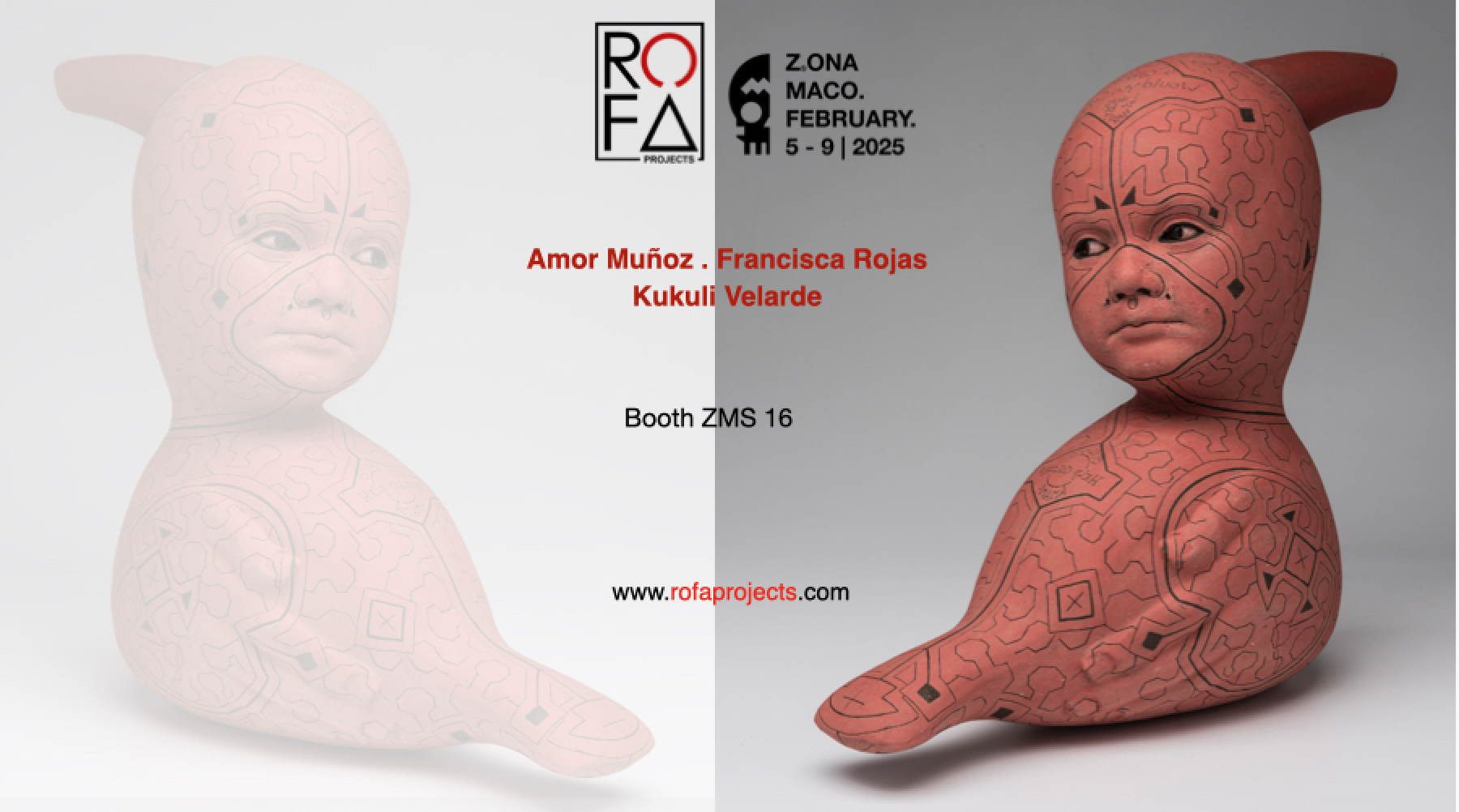Zona MACO
Cuidad de México, México - Feb. 5/9, 2025
LOOKING INWARD
Colonialism, neocolonialism, and a social and economic structure with great inequalities make it increasingly urgent to keep historical memory alive. Its artifacts and the reinterpretation of these help us preserve it, thereby promoting the reevaluation of our body territory.
Looking inward is an interpretation of collective memory, identity, and its importance through the use of contemporary strategies. It is an approach full of redefinition at the hands of women artists and artisans who pay tribute to the body and its context with their own vocabularies.
Each character in this proposal is shown as a tribute to ancestral roots and nature's vital role in forming our identity and its integrative multiplicity. A tribute to objects, to the hands of weavers and potters, highlighting the importance of the voice and work of women in our history.
Amor Muñoz creates constellations of ideas, stories, and references associated with living matter, contextualizing certain technologies. Through techno diversity, she establishes connections between the ancestral, the technological, the organic, and the cultural.
Through the barrelling technique, we can learn from her work how to read poetry using binary codes. Zeros and Ones become mixtures of blacks and whites that give voice to different bodies of history and allow us to read and even listen to their memory.
Kukuli Velarde, through her sculptural work around the re-interpretation of pre-Columbian ceramics, recovers the technique and iconographic elaboration of Cupisnique, Nazca, Mochica, and Tiahuanaco art, creating a link between the past and the present, which reflects the mixture of aesthetics today as it was 400 years ago. Her theme addresses feminine representations as a review of colonial iconography and interpretation of Peruvian and Mesoamerican pre-Columbian art, moving her discourse from the personal to the collective.
Francisca Rojas uses history and traditional elements immersed in the duality of the Andean vision and does so with an evident feminist perspective. Through the use of black ceramics, she alludes to the production of Quinchamalí ceramics, whose material base proposes a questioning of the distinctions between art and crafts. And, with her Quipus series, she recognizes the latter as the ancestor of current computer systems with a decolonial approach.
In times of recovery of historical memory and social justice, this group of artists exposes the truth hidden in objects and invites us to learn from what we have experienced, look inward, and return to touch and the body.
These artists create with their workspaces of visibility told by their protagonists, not from the stories of dominant and Eurocentric groups.
Our body, our first territory, our home, and its extension to our environment become protagonists and witnesses of historically marginalized stories, of the recovery of memory and the criticism of the present to create an imaginary of common futures.
These three artists show a space of cultural resistance through the love of life and the fabric of civilization, its origins, duality, present diversity, and the importance of accepting being part of it.
Gabriela Rosso




